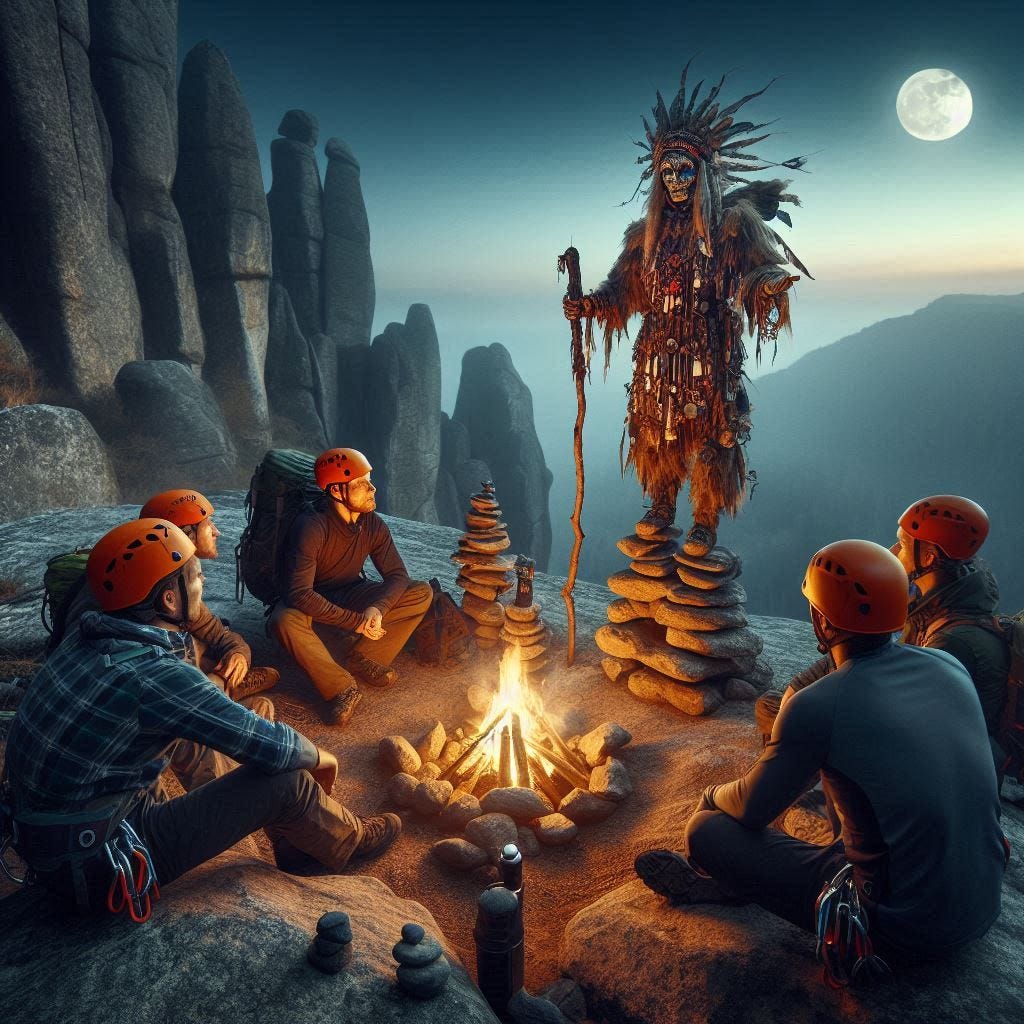folk·lore - /ˈfōklôr/ : a body of popular myth and beliefs relating to a particular place, activity, or group of people.
be·lief - /bəˈlēf/ : A belief is a mental attitude of accepting something as true or real, even without having the full intellectual knowledge to guarantee its truth
FOLKLORE VS INSTRUCTION
This phrase (Learning by Folklore), came via Brent Roth while discussing the intricacies and finer points of being an instructor. For canyoneering instructors, this phrase encapsulates two common tasks:
Expose students to structured instruction and underline its context
Deprogram beliefs that have already been acquired outside structured instruction
These are no easy, small tasks. Keeping instruction engaging, fun, student centric, and navigating the minefield of beliefs that sometimes have taken root as values and identity, is daunting. A typical example of this is:
Identity: I'm a rock climber and...
Belief: ....everything needs to be redundant
Or Beliefs like: "Double rope rappels are safe because they are so simple to rig. Anything else is unnecessarily complicated and dangerous. Keep it simple". Or, "no bolts in canyons", "ghost everything". Deprogramming is rarely achievable right away. It is usually better to 'plant the seeds' first, show how beliefs compare to rules or best practices, put the beliefs in, and then out of context.
SOURCES OF FOLKLORE
Current sources of folklore learning:
Peer to peer instruction
Online social media
Community beliefs passed in writing, or oral tradition
and, a surprise source...
Peer to peer instruction
This is how a vast majority of newcomers to the sport enter canyoneering. The quality of the knowhow varies greatly on the peer dispensing knowledge. Sometimes a trained peer, sometimes not. Sometimes a good student, sometimes not. The "broken phone" syndrome and "absence of context" are the main pain points with this mode of instruction.
Online learning
Long time ago, in a galaxy far away....the technical bar to post something online, was high enough to serve as a filter on the quality of the (computer related) online information. Nowadays, anyone with a social media account can share knowledge, opinions, beliefs, 'hot-takes', trolling comments, etc. For the newcomer, it becomes hard to distinguish the difference.
Community beliefs
This is such a time burner during instruction. The emotional appeal of community based beliefs makes them very 'sticky' and 'viral'. Notions like "Leave no trace = No bolts" or "Do not use bright color webbing", or "You should ghost everything", "Never use a PFD", "Gatekeeping is bad", "Gatekeeping is good" (the list goes on...) are all beliefs that sometimes land in the innocuous territory, but sometimes land in the "accident waiting to happen" territory.
Surprise source: The itch to teach
Instructors can also contribute to the spreading of 'beliefs' that are more folklore, or personal preferences than good practices. For instructors, it becomes important to frame their lessons in the context of Rules - Best Practices - Fit for Task or SEP.
SEP: SAFETY, EFFICIENCY & PREFERENCE
I think is a good idea, especially to follow this sequence to qualify discussions and selection of practices and disclose to students 'why' some of them are selected of prefered over others. See reference section for link to SEP.
Thanks to Brent Roth for keeping the conversation and ideas to enhance and improve canyoneering/canyoning instruction.


